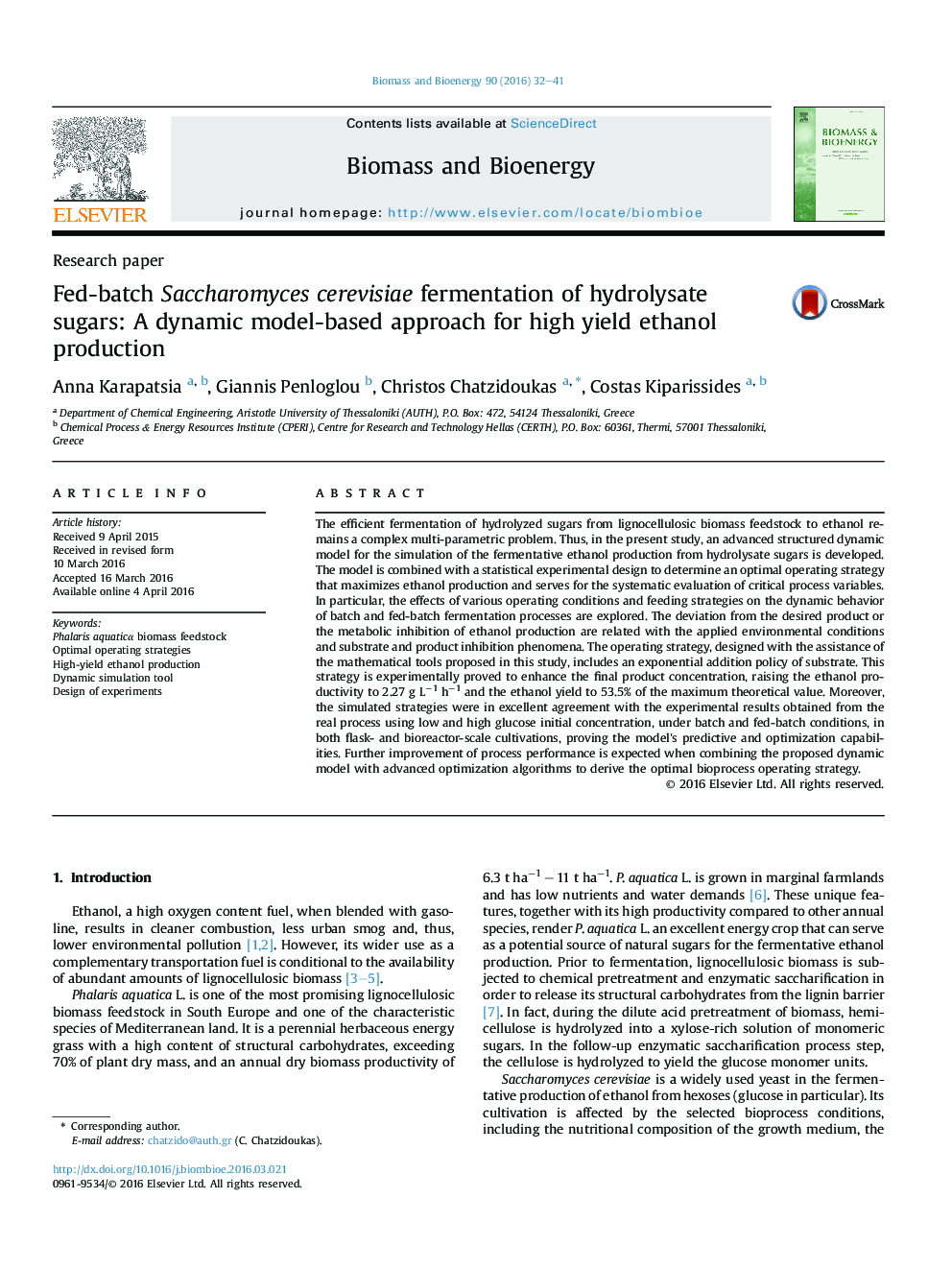| کد مقاله | کد نشریه | سال انتشار | مقاله انگلیسی | نسخه تمام متن |
|---|---|---|---|---|
| 676689 | 1459803 | 2016 | 10 صفحه PDF | دانلود رایگان |

• Phalaris aquatica L. hydrolysate sugars can be efficiently fermented to ethanol.
• Initial nitrogen concentration is the most dominant factor in the Taguchi analysis.
• A structured dynamic model simulates successfully the ethanol producing bioreactor.
• A model-based exponential feeding regime maximizes the ethanol productivity.
• The proposed model can serve as a tool for process optimization and scale-up.
The efficient fermentation of hydrolyzed sugars from lignocellulosic biomass feedstock to ethanol remains a complex multi-parametric problem. Thus, in the present study, an advanced structured dynamic model for the simulation of the fermentative ethanol production from hydrolysate sugars is developed. The model is combined with a statistical experimental design to determine an optimal operating strategy that maximizes ethanol production and serves for the systematic evaluation of critical process variables. In particular, the effects of various operating conditions and feeding strategies on the dynamic behavior of batch and fed-batch fermentation processes are explored. The deviation from the desired product or the metabolic inhibition of ethanol production are related with the applied environmental conditions and substrate and product inhibition phenomena. The operating strategy, designed with the assistance of the mathematical tools proposed in this study, includes an exponential addition policy of substrate. This strategy is experimentally proved to enhance the final product concentration, raising the ethanol productivity to 2.27 g L−1 h−1 and the ethanol yield to 53.5% of the maximum theoretical value. Moreover, the simulated strategies were in excellent agreement with the experimental results obtained from the real process using low and high glucose initial concentration, under batch and fed-batch conditions, in both flask- and bioreactor-scale cultivations, proving the model's predictive and optimization capabilities. Further improvement of process performance is expected when combining the proposed dynamic model with advanced optimization algorithms to derive the optimal bioprocess operating strategy.
Figure optionsDownload as PowerPoint slide
Journal: Biomass and Bioenergy - Volume 90, July 2016, Pages 32–41